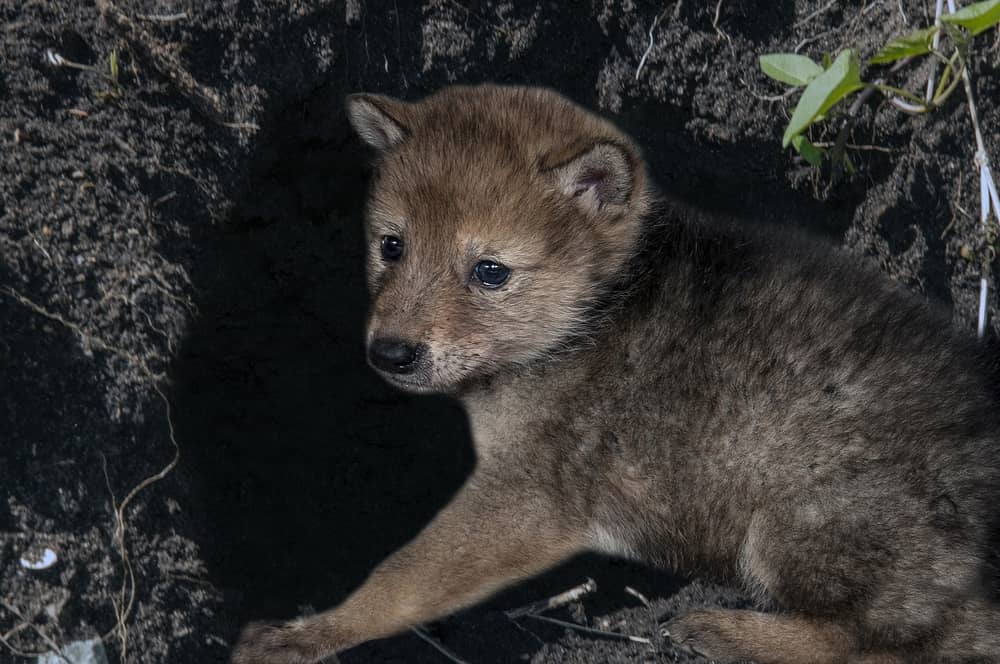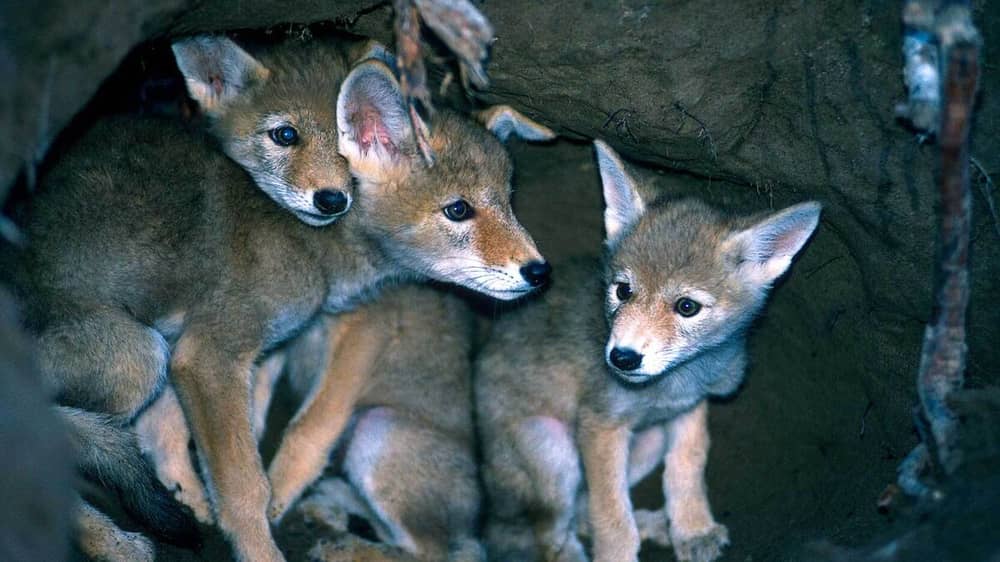Do coyotes live in dens?
In a variety of settings across North America, coyotes have developed a reputation as resourceful survivors. Coyotes depend on dens as important shelters. Additionally, it serves as a safe place for raising their young and protection from predators and harsh weather.
Coyotes have the option of digging their own burrows. Some people reuse pre-existing structures, like hollow logs, caves, and even vacant buildings. The denting behaviors of coyotes reveal their extraordinary adaptability and survival techniques.
It’s crucial for managing wildlife and conservation efforts to comprehend how coyotes use dens. Researchers can learn more about coyote habitat needs by observing their behavior. After that, they might come up with tactics for reducing conflicts between people and wildlife. In this article, let’s discover more about coyotes’ habitat for dens.
Table of Contents
How Can You Tell A Coyote Den?
It might be difficult to discover a coyote den because they are frequently well-hidden and placed in unusual places. Nevertheless, there are a number of indicators and hints that can show you whether a location is being utilized as a coyote den:
Distinctive Smell
Due to the buildup of urine and excrement, coyote dens can smell strongly. There may be a den nearby if you smell anything strong and musty in a certain place.
Tracks And Trails
Search for tracks and well-traveled paths that lead to and from a particular location. Coyotes generally leave quite unique trails when they enter and exit their dens. The traces will look like dog tracks, but they usually measure only 2 to 2.5 inches long instead.
Scat And Hair
Coyote scat, which resembles dog excrement but is smaller and longer. It might be discovered on neighboring paths or close to the den’s entrance. Additionally, the area around the den may have stray coyote hairs.
Excavation Marks
Coyotes regularly create their own dens. Therefore, you can encounter excavation-related indicators like recently dug soil, loose dirt, or uprooted vegetation. Look for areas where the ground has been disturbed or where there is a depression that might be a den entrance.
Vocalizations And Activity
Especially during the breeding season and when caring for their young, coyotes are loud animals. If you hear yipping and howling emanating from a certain location, there may be a den close by. Additionally, seeing more coyotes in a specific area at dawn and dusk may indicate the presence of a den.
It’s crucial to remember that coyotes are quite adaptable. Depending on a variety of variables, they could use different dens or alter the site of their den. It’s preferable to observe from a safe distance and to stay away from the area if you think there might be a coyote den there. To protect both your safety and the wellbeing of the coyotes, respect their natural behavior and allow them room.
Do Coyotes Live In Dens?

The utilization of dens by coyotes is one facet of animal behavior that has intrigued researchers. Coyotes are scavengers that frequently live in packs with their young. Dens are used by these groups as a place to rest and as a nursery for their young.
Coyotes make use of many different types of dens, including hollow logs, rock crevices, culverts, and abandoned structures. Additionally, they create their own dens in sandbanks or soil. Coyotes might even use snow burrows as a form of shelter in locations with a lot of snowfall.
During the breeding season, which normally lasts between January and March, coyotes are most likely to use dens. A litter of 4-6 pups will be born to the female coyote, and the den offers a secure environment for their growth and development. For insulation and comfort, grass, leaves, and other materials are sometimes used to line coyote dens.
Coyotes may construct dens in storm drains or culverts in metropolitan settings. Additionally, they could use neighboring buildings or abandoned ones as shelter. It immediately affects people’s safety. Wildlife authorities may therefore encourage locals to lock their trash cans and refrain from placing pet food outside. because coyotes may be drawn to these in urban settings.
Can You Walk Past A Coyote?
Especially in locations where coyotes are known to live, running into a coyote while strolling can be a fairly typical occurrence. Coyotes typically avoid interacting with people. It’s crucial to proceed cautiously and adhere to some rules, though:
Maintain Distance
It’s critical to stay a safe distance if you come across a coyote when out strolling. Stay away from the coyote and give it room. The safest distance between you and the coyote is at least 100 yards (91 meters).
Be Aware Of Your Surroundings
Walking requires being watchful and conscious of your surroundings. Observe the coyote for any indications of strange behavior, such as when it comes directly to you or displays defensive behavior.
Make Yourself Visible
Declare your presence by waving your arms and making noise. This may assist the coyote understand that you are a person and discourage it from approaching you. If you need to frighten it away, speak in a firm and assertive manner.
Keep Pets On A Leash
It’s crucial to keep your pet on a leash and under your supervision when you’re out on a stroll. Small animals may be mistaken for potential prey or cause a coyote to become protective. Never allow your pet to approach or engage with a coyote.
Back Away Slowly
It’s important to move cautiously away from the coyote while keeping eye contact. Never turn around and run since this can set off a chasing tendency.
It’s crucial to remember that coyotes tend to be skittish and will often avoid interacting with people. However, it’s better to constantly be cautious and give them room. Contacting local wildlife officials for more advice and information may be helpful if you frequently come across coyotes.
How Deep Are Coyotes Den?

The depth of coyote dens can vary based on a number of variables, including the species, geography, and terrain. The following general guidelines apply to coyote den depth:
Natural Dens
Utilizing pre-existing underground buildings, such as abandoned animal-made tunnels, is an option for coyotes. These dens can range in depth, but they are often only a few inches to a few feet below ground.
Self-Dug Dens
When adequate natural dens are not available, coyotes, who are adept diggers, will create their own burrows in dirt or sandbanks. These self-dug dens are normally between 3 and 10 feet below the surface and can reach greater depths. Depending on the coyote’s preferences and the soil’s stability, the exact depth will vary.
Human-Made Structures
Coyotes may adapt and utilize a variety of man-made structures as dens in metropolitan settings or other places where humans are present. Culverts, storm drains, and even abandoned buildings may be among them. Depending on the particular construction, the depth of these dens may vary, but they are frequently shallow and situated inside the building.
Final Thoughts
In conclusion, coyotes are versatile creatures that use dens for housing and rearing their young. They could make use of existing natural features like abandoned burrows or create their own dens in sand or soil. Coyotes can also modify human-made structures in metropolitan settings. For wildlife management and coexistence initiatives, it is essential to comprehend coyote denning behavior. We sincerely hope that this page might assist you in learning more about coyotes’ natural environment!

